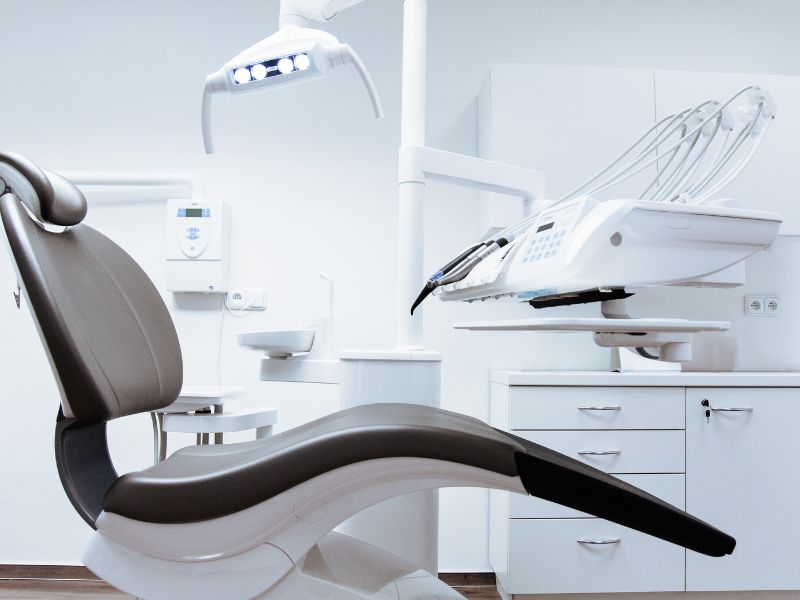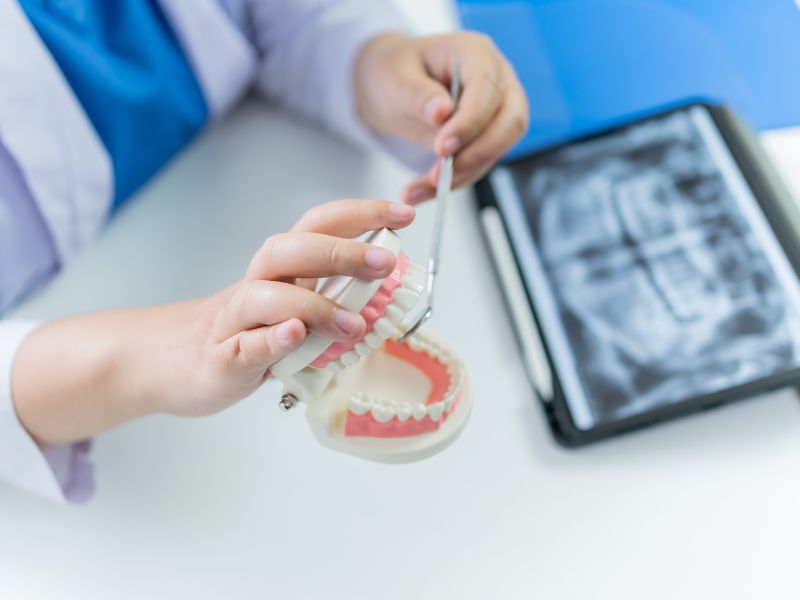 In today's competitive landscape, dental practices must embrace strategic marketing to thrive. Dental marketing goes beyond simply placing an ad; it's about building a strong brand, engaging with potential patients, and fostering long-term relationships. The digital revolution has fundamentally transformed how patients seek dental care, shifting from traditional word-of-mouth to online searches and social media interactions. A robust digital marketing strategy is no longer optional but essential for attracting new patients and retaining existing ones. By leveraging the right tools and techniques, dental practices can significantly increase their patient base, enhance their reputation, and ultimately, boost their return on investment (ROI). This guide will navigate you through the core components of effective dental marketing, providing actionable insights and strategies to elevate your practice.
In today's competitive landscape, dental practices must embrace strategic marketing to thrive. Dental marketing goes beyond simply placing an ad; it's about building a strong brand, engaging with potential patients, and fostering long-term relationships. The digital revolution has fundamentally transformed how patients seek dental care, shifting from traditional word-of-mouth to online searches and social media interactions. A robust digital marketing strategy is no longer optional but essential for attracting new patients and retaining existing ones. By leveraging the right tools and techniques, dental practices can significantly increase their patient base, enhance their reputation, and ultimately, boost their return on investment (ROI). This guide will navigate you through the core components of effective dental marketing, providing actionable insights and strategies to elevate your practice.
Dental marketing encompasses all activities aimed at promoting a dental practice and its services to attract and retain patients. It involves understanding patient needs, crafting compelling messages, and utilizing various channels to reach the target audience.
Traditionally, dental marketing relied on methods like print ads, yellow pages listings, and direct mail. However, the rise of the internet has ushered in an era of digital dental marketing, which includes SEO, PPC, social media, and content marketing. While traditional methods can still play a role, a successful dental marketing strategy today primarily focuses on digital channels.
Print Ads
Direct Mail
Billboards
Radio
Websites
SEO
PPC
Email Marketing
Social Media
Key components of a strong dental marketing strategy include a professional, mobile-friendly website that reflects your brand and services clearly. A strong online presence through SEO, local listings, and consistent branding across platforms helps patients find and choose your practice. Engaging content such as blogs, videos, and patient testimonials not only boosts your visibility but also builds authority and trust. Finally, effective communication—through email, social media, and your website—ensures you stay connected with patients, nurture relationships, and encourage long-term loyalty.
An optimized dental website
Consistent branding and messaging
Strong local SEO presence
Engaging content and social media
Measurable analytics and ongoing improvement
Effective communication to build trust and credibility
The core pillars of dental marketing—SEO, PPC, content marketing, social media, email, video, referral, and conversion optimization—work together to attract new patients and build lasting relationships. By integrating these strategies, dental practices can enhance their online visibility, engage their audience, and drive consistent growth.
SEO for dental practices involves optimizing your online presence to rank higher in search engine results. This is crucial as most potential patients begin their search for a dentist online. Local SEO is particularly vital, focusing on optimizing for local search queries. Google My Business (GMB) is a cornerstone of local SEO, allowing you to manage your online listing with accurate information, photos, and reviews. Local citations (mentions of your practice on other websites) also play a significant role. Keywords related to dental services and location are essential for content optimization. Staying updated with the latest SEO trends and algorithm updates is crucial for maintaining visibility.
As dental SEO specialists, we know how to get your practice on the map—literally.
Optimize your Google Business Profile, manage local citations, and gather positive reviews.
Rank for high-intent searches like “dentist near me” or “Invisalign in [city].”
Fast loading speeds, mobile optimization, and structured data.
Stay ahead of SEO changes with our proactive strategy.
PPC for dentists allows dentists to place targeted ads on search engines and social media platforms, paying only when a user clicks on the ad. Google Ads and Facebook Ads are popular platforms for dental practices. Google Ads targets users actively searching for dental services, while Facebook Ads allows you to target specific demographics and interests. Running a successful PPC campaign requires careful keyword research, ad copywriting, and landing page optimization.
Targets active searchers
Excels in brand awareness and local promotions
Geo-targeting for local audiences
Call tracking and conversion monitoring
A/B testing ad copy and landing pages
Great content educates, builds trust, and supports SEO. Content marketing involves creating and sharing valuable, relevant, and consistent content to attract and retain a clearly defined audience. For dental practices, content can include blog posts about dental health, patient testimonials, educational videos, and infographics. Engaging and SEO-friendly content not only attracts potential patients but also establishes your practice as a trusted authority. It’s important to create content that addresses patient concerns and answers common questions.
Informative blog posts
Patient testimonials
How-to videos and educational guides
Infographics and FAQs
Creating engaging and SEO-friendly content for dental websites starts with understanding what your patients are searching for and delivering valuable information that answers their questions. Use keyword research tools to identify high-intent search terms related to your services—like “best teeth whitening near me” or “Invisalign cost”—and naturally incorporate these into your content. Structure your pages and blog posts with clear headings, bullet points, and short paragraphs to improve readability. Include visuals such as before-and-after photos, infographics, or videos to keep users engaged. Most importantly, write in a tone that’s professional yet approachable, and focus on building trust by highlighting patient success stories, answering common dental concerns, and demonstrating your expertise. Regularly updating your content also signals to search engines that your site is active and relevant.
Social media platforms like Facebook, Instagram, LinkedIn, and TikTok offer powerful tools for engaging with patients and building brand awareness. Facebook is excellent for community engagement, Instagram for visual storytelling, LinkedIn for professional networking, and TikTok for short, engaging videos. A mix of paid and organic strategies is essential. Post consistently, respond to comments, and run targeted ads. Organic strategies focus on creating engaging content and building a community, while paid strategies allow you to reach a wider audience through targeted ads.
Community engagement
Visual storytelling
Reaching younger demographics
Professional networking
Email marketing is a valuable tool to stay top of mind and increase patient retention. It allows you to stay in touch with patients, provide valuable information, and promote your services.
Appointment reminders
Promotions
Newsletters
Personalized communications
To make your email marketing more personalized and effective, start by segmenting your patient list based on demographics, treatment history, or appointment behavior. Use dynamic fields to personalize each email with the recipient’s name and relevant details, such as upcoming appointment reminders or recommended services based on past visits. Automated email workflows can be set up to trigger based on specific actions—like sending a welcome message to new patients, a follow-up after a procedure, or a reactivation email for patients who haven’t visited in a while. Keep your tone friendly and informative, and always provide a clear call-to-action, such as scheduling an appointment or contacting your office. Personalization combined with automation not only improves open and click-through rates but also helps build lasting patient relationships through timely, relevant communication.
Collaborating with local influencers and dental bloggers can significantly boost your practice’s visibility and credibility within your community. These individuals already have a loyal following that trusts their recommendations, making them powerful advocates for your services. When they share their positive experiences—whether it’s a teeth whitening treatment, a smile makeover, or even a simple check-up—it creates authentic, word-of-mouth marketing that resonates more than traditional ads. Local influencers can help humanize your brand, increase engagement on social media, and drive traffic to your website. Plus, partnerships like these often lead to valuable user-generated content, such as reviews, photos, and videos, that you can repurpose across your marketing channels.
Referral programs are a powerful way to encourage word-of-mouth marketing by turning satisfied patients into active promoters of your dental practice. When you offer incentives—such as discounts, gift cards, or complimentary services—for referring friends or family, you give patients a tangible reason to share their positive experiences. This not only helps you attract new, high-quality leads but also builds trust with potential patients, as people are more likely to choose a dentist recommended by someone they know. A well-structured referral program strengthens patient loyalty, increases retention, and creates a steady stream of organic growth driven by genuine satisfaction and community connection.
Video content is increasingly popular among patients seeking dental information. Platforms like YouTube, Instagram Reels, and TikTok offer excellent opportunities for video marketing. Live streaming and patient testimonial videos can build trust and engagement. Creating high-quality, informative, and engaging videos is essential for success.
Patient testimonials
Educational content
Office tours
Meet the team intros
Getting traffic is only half the battle—turning visitors into patients is the ultimate goal. That’s where Conversion Rate Optimization (CRO) comes in. CRO involves analyzing how users interact with your website and making strategic improvements to guide them toward taking action, such as scheduling an appointment or contacting your office. This process includes A/B testing different versions of landing pages, headlines, buttons, and forms to see which variations drive more conversions. The design and functionality of your website are also critical—clean layouts, intuitive navigation, fast loading times, and mobile responsiveness all contribute to a positive user experience (UX). A seamless user interface (UI) ensures that patients can quickly find the information they need and take the next step without confusion or frustration. Clear calls to action like “Book an Appointment” or “Call Now” should be prominently displayed and easy to access. By fine-tuning each element of your website with the patient journey in mind, CRO helps maximize the value of your web traffic and ensures more visitors become loyal patients.
Compare landing page versions to improve results
Make your site intuitive, fast, and mobile-friendly
Guide users to schedule appointments with minimal friction
Several tools and technologies can help streamline your dental marketing efforts. SEO tools like Google Search Console, Ahrefs, and SEMrush provide insights into website performance and keyword rankings. PPC tools like Google Ads and Facebook Ads Manager help manage and optimize ad campaigns. Content marketing tools like Grammarly and SurferSEO assist in creating high-quality, SEO-friendly content. Social media tools like Hootsuite and Buffer help manage social media accounts and schedule posts. Patient analytics and CRM tools like Google Analytics, Hotjar, and HubSpot provide data on website traffic, patient behavior, and campaign performance.
Helps you monitor your website’s performance in search results and identify technical issues affecting visibility
Powerful tool for backlink analysis, keyword research, and tracking competitor SEO strategies
Offers a comprehensive suite for SEO auditing, keyword tracking, and content optimization
Allows you to create and manage targeted ad campaigns across Google Search, Display, and YouTube
Provides detailed targeting and performance metrics to run effective ad campaigns on Facebook and Instagram
Ensures your content is clear, grammatically correct, and professional
Helps you create content that ranks by analyzing the top-performing pages for your target keywords
Easy-to-use design tool for creating custom graphics, infographics, and social media visuals
Allows you to schedule posts, monitor engagement, and manage multiple social media accounts from one dashboard
Streamlined platform for scheduling content, analyzing performance, and planning campaigns
Specializes in visually planning and scheduling Instagram, TikTok, and other social posts
Tracks website traffic, user behavior, and conversion goals to help you understand what’s working
Provides heatmaps and session recordings to visualize how visitors interact with your site
Combines CRM, email marketing, and automation tools to manage leads and nurture patient relationships
Creating a dental marketing strategy involves setting clear SMART goals, understanding your target audience, and allocating your budget across the most effective channels. By continuously tracking performance and optimizing based on data, you can ensure your marketing efforts deliver maximum ROI and long-term practice growth.


Setting SMART goals—Specific, Measurable, Achievable, Relevant, and Time-bound—provides a clear roadmap for growing your dental practice. Instead of vague objectives like “get more patients,” SMART goals help you define targets such as “increase new patient appointments by 20% over the next three months.” This structure keeps your team focused, aligns your marketing efforts with business priorities, and makes it easier to track progress and make data-driven adjustments.
Identifying your target audience and creating detailed patient personas allows you to tailor your marketing efforts to the specific needs, preferences, and behaviors of your ideal patients. By considering factors like age, location, income level, dental concerns, and online habits, you can craft more relevant messages that resonate and convert. Understanding who you’re trying to reach ensures your content, ads, and outreach strategies are both effective and cost-efficient.
Budgeting and resource allocation are essential for maximizing the return on investment (ROI) of your dental marketing efforts. By analyzing past performance and setting clear priorities, you can strategically distribute your budget across high-impact channels like SEO, PPC, and social media. Regularly reviewing your spending and results ensures you're investing in what works and adjusting quickly when needed.
Performance tracking and analytics are key to understanding what’s working in your dental marketing strategy and where adjustments are needed. Tools like Google Analytics, Hotjar, and CRM platforms help you monitor website traffic, patient behavior, and campaign performance in real time. By consistently reviewing these insights, you can make data-driven decisions that improve engagement, increase conversions, and drive sustainable practice growth.
The future of dental marketing will be shaped by emerging technologies and trends. AI and automation will play a significant role in patient engagement, providing personalized experiences and streamlining communication. Voice search will impact dental SEO, requiring optimization for voice queries. Personalization and hyper-targeting will enhance patient retention by delivering tailored messages. Augmented Reality (AR) and Virtual Reality (VR) may revolutionize dental consultations, offering immersive and interactive experiences.


AI and automation are transforming how dental practices communicate with patients by enabling instant, 24/7 engagement through chatbots, appointment reminders, and follow-up emails. These tools streamline front desk operations, reduce no-shows, and enhance the patient experience by offering timely, personalized responses. As technology continues to evolve, AI-driven platforms will play a bigger role in anticipating patient needs and automating repetitive marketing tasks.
Voice search is changing how patients find dental services, with more users speaking natural, question-based queries like “Where’s the best dentist near me?” To stay competitive, dental websites need to optimize content for conversational keywords and feature-rich snippets. Prioritizing mobile-friendly design, fast load times, and local SEO also boosts visibility in voice search results.
Personalization and hyper-targeting allow dental practices to deliver highly relevant content, offers, and reminders tailored to each patient’s treatment history and preferences. By using data from CRMs and patient behavior analytics, practices can segment audiences and craft messages that feel one-on-one. This approach not only improves engagement but also builds loyalty and increases lifetime patient value.
AR and VR technologies are revolutionizing dental consultations by giving patients a visual preview of procedures, treatment outcomes, or smile transformations. These immersive experiences help reduce anxiety, improve understanding, and increase treatment acceptance. As adoption grows, AR and VR will become powerful tools for patient education and case presentation in modern dental practices.
Dental marketing has evolved into a dynamic, data-driven discipline that encompasses strategies like SEO, PPC, content marketing, social media, email, video, and referral programs. Tools such as Google Search Console, HubSpot, and social media schedulers help streamline these efforts, while techniques like CRO and personalized content improve patient conversions and retention. Emerging technologies, including AI, voice search, and AR/VR, are reshaping how practices engage with patients—offering new opportunities for automation, hyper-targeted outreach, and immersive consultations.
To stay competitive, dental practices must remain adaptable and embrace continuous learning. Search engine algorithms change, patient behaviors evolve, and digital platforms regularly update features, requiring a proactive and flexible approach to marketing. Leveraging data insights, testing new tactics, and staying informed about industry trends ensures your practice continues to attract and retain the right patients.
Implementing best practices—from optimizing for voice search and using automation to creating engaging content and refining user experience—can significantly improve marketing ROI. With the right strategy and tools, your dental practice can thrive in today’s digital-first environment. Whether you partner with a dental marketing agency or build your efforts in-house, now is the time to invest in marketing that drives measurable, long-term growth.
DentalROI delivers the expertise and tools you need to attract new patients and expand your practice. Ready to see the results? Fill out the form to start your growth journey today.